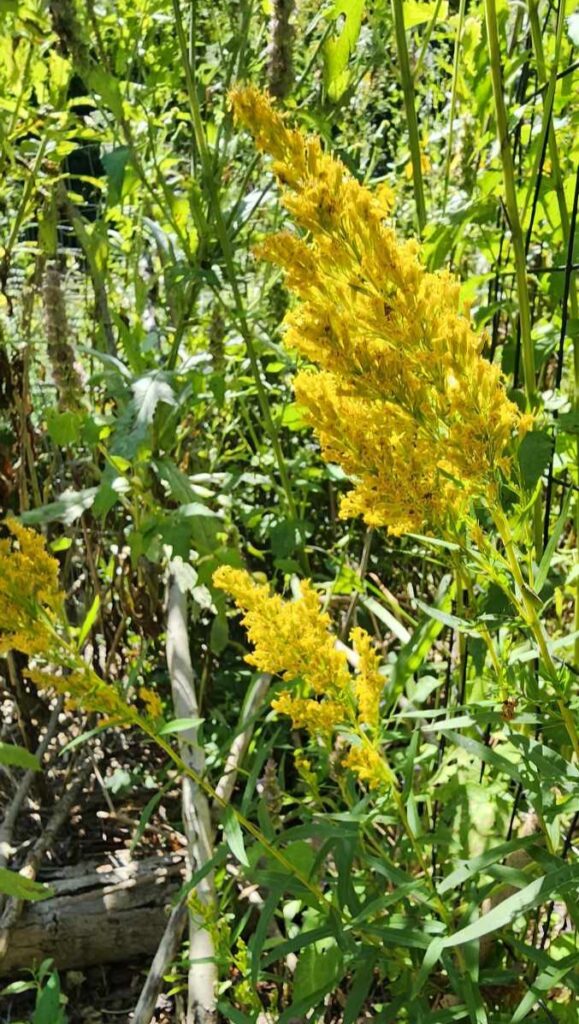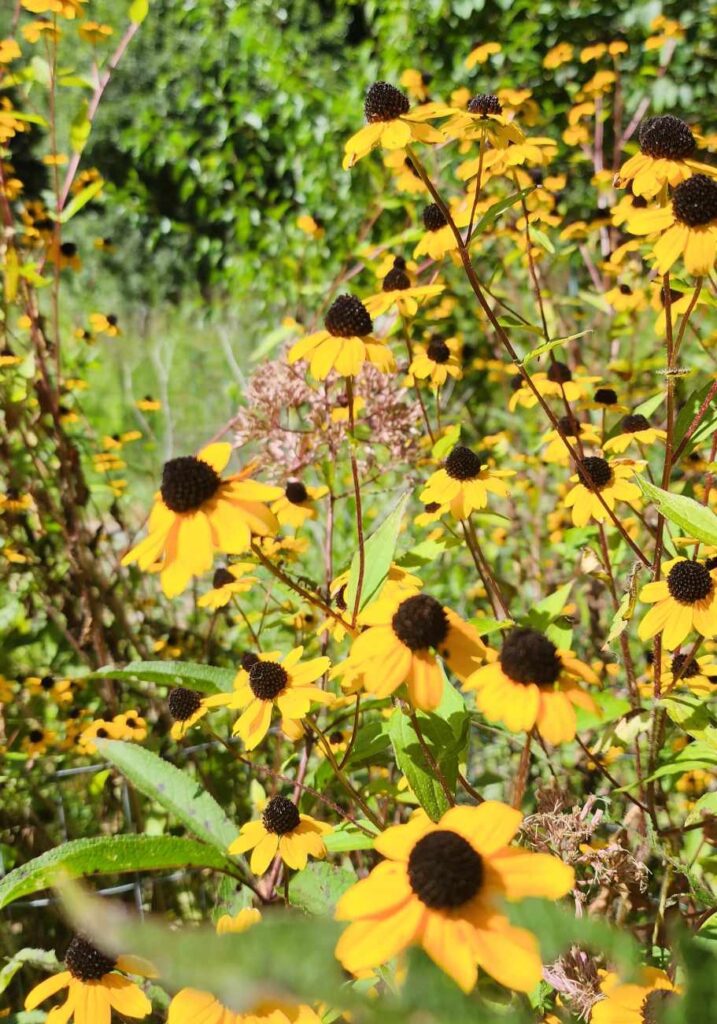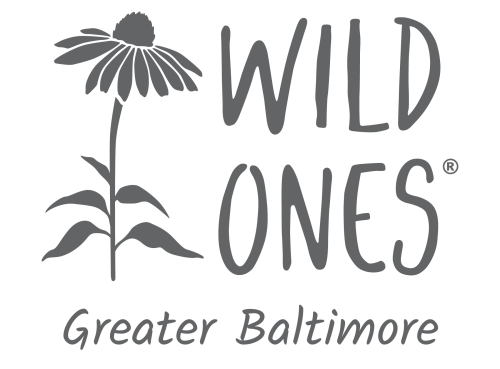by Nan Wray ✎
Deep into summer, as late-season flowers were calling to pollinators everywhere, a small group of native plant enthusiasts excitedly gathered in the driveway of a property that was sure to enchant—that belonging beloved author of the Humane Gardener and Wildscape, Nancy Lawson.

Lawson graciously agreed to open up her own garden to an audience who would understand its wildness—other Wild Ones members. Who better to understand and appreciate this garden’s true purpose: to give back to the wild creatures that have been gradually marginalized to the edges of farm fields and power company right-of-ways to find their sustenance and habitat.
Lawson’s property is nestled among languid parcels along a gently sloping road with large arching trees overhead and broad vistas that make you breathe a bit more deeply as you approach. I could feel my shoulders start to relax the nearer I got to the destination; my internal clock seemed to pause and resume at a slower pace. It became clear why she chose this spot, and the cheerful rancher that sat amongst the trees and shrubs seemed perfectly at home as part of the landscape, rather than being the main feature.
What was apparent was that, for decades, Lawson has been pouring her heart into allowing habitat to go a bit wild, rather than suppressing it to give her home greater prominence, or manicuring the greenery in a way that would traditionally impress neighbors.

Instead, her garden is about discovery, and the quietness of the pine and wood-chipped pathways added to the enchantment. The naturalness of the plants gave rise to the feeling of being part of nature rather than owning it. She was not dictating a place for one species or another. Instead, they had seeded where conditions seemed right, allowing your eye to travel here and there to find more of what was in flower.

So many flower faces were thriving in the brilliant sun—black-eyed susans, joe pye weed, goldenrod, cardinal flower, great blue lobelia, beebalm, yarrow, and blue mist flower were just some of the vibrant blooms along the winding paths. Softening the stalks everywhere were grasses in abundance, such as a fancy purple top and silver plume grass, to name a few. Meanwhile, bright stalks and berries of native pokeweed added contrast to the softer hues of flowering plants alongside the rich greens of grasses, sedges, and ferns. Late boneset and field thistle were especially striking against the intense blue of the sky, and I was fairly smitten with the surprising softness of our native thistle bloom, which was being properly hounded by several butterflies.
Down below a series of ponds decorated in small green dots (native duckweed) and lined with pickerelweed enchanted us, and we stopped for some time admiring the view. Lawson said she had so many frogs that came to enjoy her first pond that she quickly added more, without any fuss, by unceremoniously sinking plastic tubs in the ground. They were quickly inhabited as well. My resolve to set up my own frog habitat in the form of a pond solidified in that moment.

As we continued down one of several paths, what became apparent is that her yard is designed for observation, and a pair of comfortable chairs marked the end of every path. So much of what she writes so beautifully about in her books was gleaned from gentle observation—allowing herself to relax in this beautiful setting and learn from the many creatures that most of us discount without a second thought, or destroy in clouds of poison meant for a single insect, the mosquito.

Lawson has in abundance what many of us lack when it comes to our own gardens: patience. The patience to know that you can have a pond, and if you allow time and provide habitat for the mosquito’s predators, such as dragonflies, birds and bats, that you don’t have to rely on poison, which is impossible to contain, even on windless days. The companion to this patience would be the foresight to understand that as one tree dies or falls, it allows the landscape to evolve, changing the way it supports or transforms nearby habitats.

Deeper into her garden, we bathed in the lushness of ferns and mosses, grape vines and sassafras groves. Later, over summer drinks and snacks, a hummingbird decided to get in on the action and see if any of the sugar was in flower form. Not on the table, but there were enticements nearby on blooms that had nectar at the ready.

Lawson’s garden was truly a haven not only for the creatures she worked so hard to nourish and protect, but the humans who get to enjoy this rapturous setting with them, and reconnect with what it truly means to be humane.
Visit Bookshop.org to order a copy of her first book, The Humane Gardener, or her latest book, Wildscape.
To become a Wild Ones member, or give the gift of membership, visit our national site, WildOnes.org. ❀
Photos by Ashley Fulton Howard
